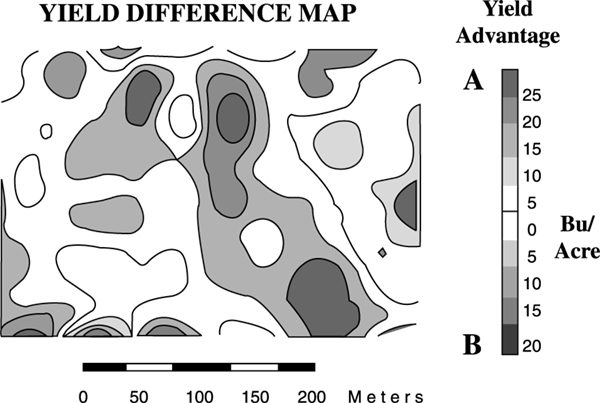No-Till Farmer
Get full access NOW to the most comprehensive, powerful and easy-to-use online resource for no-tillage practices. Just one good idea will pay for your subscription hundreds of times over.

Yield monitors are an unparalleled data-collection device for on-farm testing, says Tom Doerge, Pioneer precision farming specialist.
Doerge calculates that if your yield monitor and Global Positioning System are taking a reading every second on 2,000 no-tilled acres, you’ll collect over 8 million data points per year.
You can now take this data to a new level by using Pioneer’s split-planter method to evaluate any two agronomic treatments in parallel strips.
“The split-planter test originated as a way to divide a planter in half and plant two different hybrids and then compare them,” Doerge explains. “With the combine width, planter width and strip width synchronized, you can put hybrid A in one half of the planter and hybrid B in the other half and plant the field accordingly.”
Doerge emphasizes that the split-planter comparison isn’t limited to hybrid comparisons. The method can be used for any type of paired treatment, such as starter fertilizer or insecticide treatment, that is put into the field in repeating, alternating strips.
Doerge explains that with a typical yield map you really can’t tell which treatment is better or worse because the differences aren’t pronounced.
With Pioneer’s software developed for the split-planter method. The yield information is electronically divided into two separate data sets (one for each treatment). This leaves two yield maps with every other strip in each map blank. A Geographical Information System (GIS) then interpolates across the blank strips where there is no data and estimates the yield.
Doerge says Pioneer returns…